15 Cardio Exercises For Bad Knees That Strengthen Leg Muscles
Add a mix of low-intensity workouts to your routine to keep your knees in top shape.
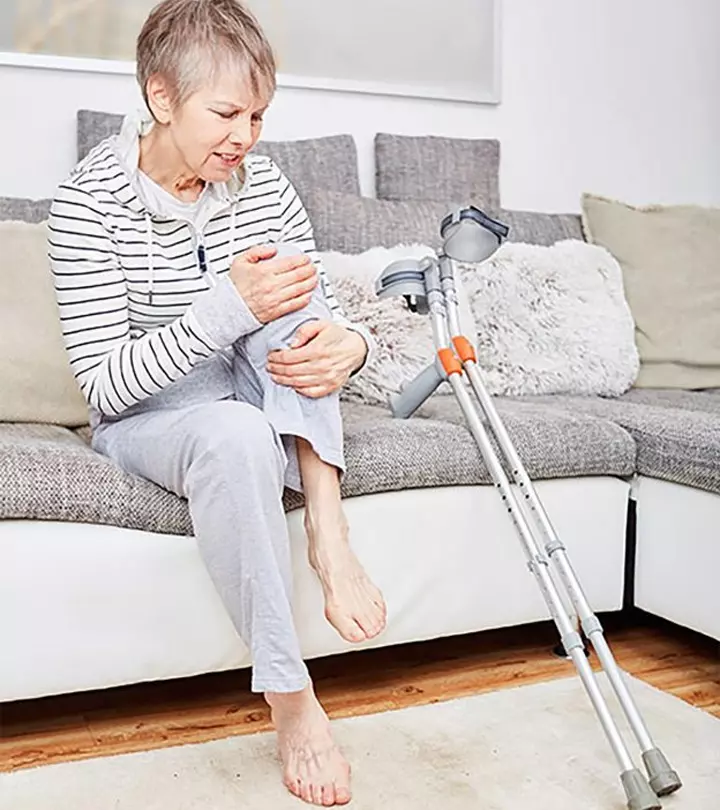
Image: ShutterStock
Doing low-impact cardio exercise for bad knees is certainly a good idea according to studies (1). Excessive exercise training, arthritis, injury due to a fall, sports injury, or obesity may cause knee pain (2), (3), (4), (5). It reduces the ability to move freely and impacts the quality of life.

A combination of medical treatment and physical therapy can offer quick relief from knee pain (6), (7). In this article, we have listed 15 cardio exercises that can help relieve your knee pain and strengthen your leg muscles. Scroll down to check them out.
 Cardio Exercises For Bad Knees
Cardio Exercises For Bad Knees- Frequency: Daily
- Benefits: Reduce stiffness, improve joint mobility, relieve knee pain, and strengthen the leg muscles
- Equipment Needed: Resistance bands, a chair, a stationary bike, and an underwater treadmill
- Space Required: Small area
- Assistance Required: Yes. Consider consulting your fitness professional before doing these exercises.
- Who Should Avoid: People recovering from recent knee surgeries or having severe knee pain or arthritis
In This Article
15 Safe And Effective Cardio Exercises To Relieve Knee Pain
Before you start with these joint-friendly exercises, you must warm-up for at least 10 minutes.
Key Takeaways
- Low-impact cardio exercises may improve muscle mobility and strengthen weak lower leg muscles.
- You can perform these exercises in the comfort of your home or underwater for added impact and resistance.
- Warming up your muscles before training, following a balanced diet, and practicing a good muscle recovery regime will give you the best results.
- It is recommended to limit your range of motion to avoid injuries to joints.
Warm-Up
Warming up is important to elevate body temperature, metabolic rate, and oxygen uptake (8).
You can look at the following warm-up routine:
- Use a warm towel to gently rub your knee in a circular motion.
- Take a hot water shower.
- Ask your physical therapist to gently massage your knee before exercising.
After the warm-up, you can start doing the following low-impact, seated exercises for relieving knee pain.
Sitting/Lying Cardio For Knee Pain
1. Sitting Quad Clench
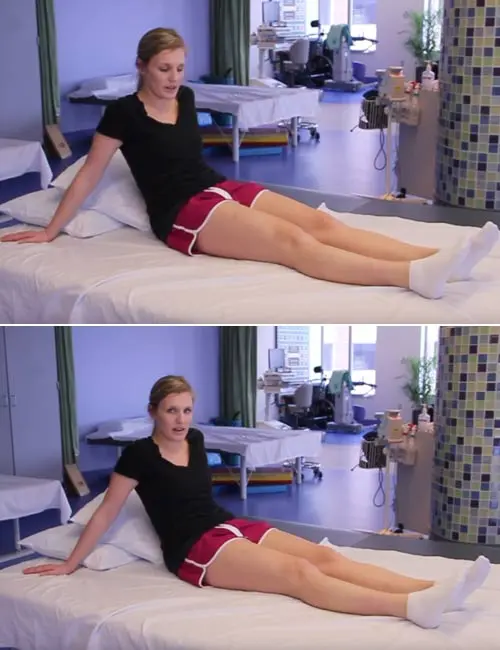
Target – Quads
How To Do
- Sit on a mat or a bed with both your legs extended forward. Place your hands behind you with the palms flat on the mat/bed. Slightly lean back.
- Squeeze your quads. You will see your kneecaps move up.
- Hold this pose for 3 seconds.
Sets And Reps
3 sets of 12 reps. Do this 4-5 times a day.
2. Sitting March
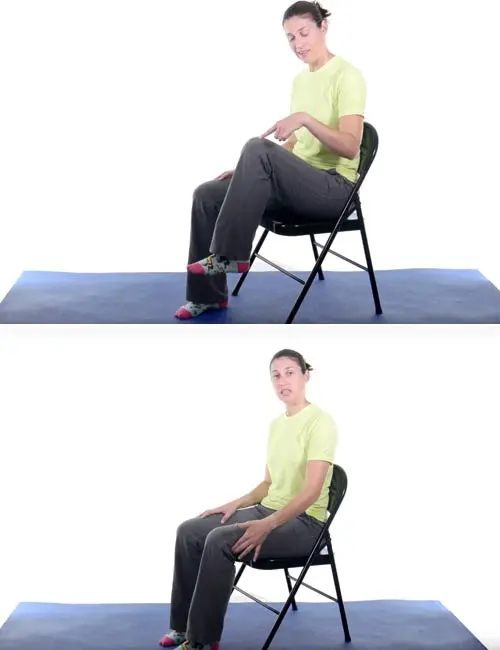
Target – Quadriceps, and hamstrings.
How To Do
- Sit comfortably on a chair in this chair exercise. Place your feet flat on the floor.
- Lift your affected leg slowly off the floor and place it down gently.
- Do the same with the other leg.
- Do this 10 times to complete one set.
 Quick Tip
Quick TipSets And Reps
3 sets of 10 reps.
3. Lying Leg Curls
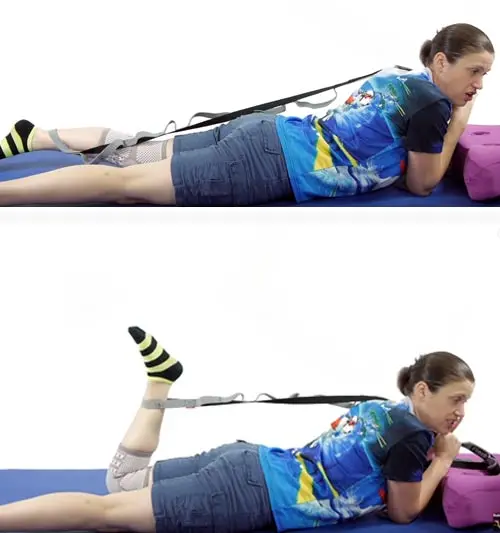
Target – Hamstrings, quads, and glutes.
How To Do
- Loop your ankle around one end of a resistance band in this resistance band exercise for knee pain, and hold the other end of the band with both your hands.
- Lie down on your belly. Keep your elbows flexed and supporting your upper body. Hold your head up and look straight ahead. This is your starting position.
- Bend your knee and bring your lower leg up so that it is perpendicular to the thigh.
- Pull the resistance band (as far as you can and as long as you want without hurting your knee) and feel the stretch in your quadriceps.
- You can start withholding it for 2 seconds. Release.
- Lower your leg on the floor.
Sets And Reps
2 sets of 12 reps. Do this 3 times a day.
4. Straight Leg Raises
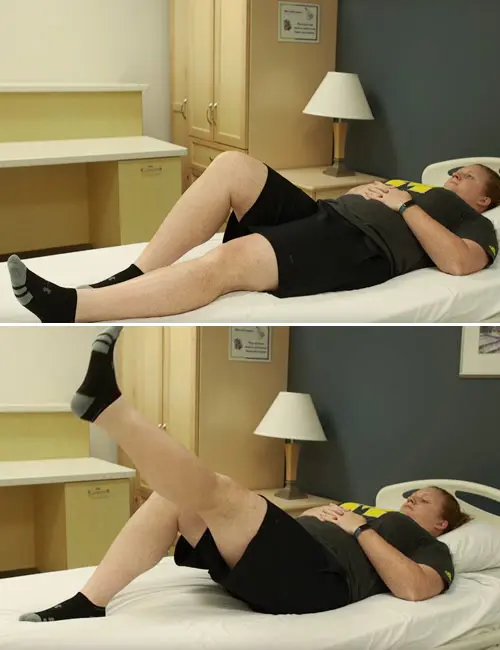
Target – Hamstrings, quads, glutes, and lower abs.
How To Do
- Lie down on your bed. Keep your good leg bent and the affected leg straight in this leg exercise for knee pain.
- Tighten your thigh muscles and slowly raise your affected leg off the bed. Stop raising your leg when the affected leg is in line with the good leg.
- Hold for 5 seconds and slowly lower your leg.
Sets And Reps
3 sets of 5 reps.
If you prefer sitting or lying exercises like the one above then you can try yoga for knee pain or even start practicing low-impact exercises like Pilates for knee pain. Pilates exercises emphasize core strength, flexibility, and controlled movements, all of which contribute to better knee health. A study analyzed the impact of pilates exercises in addressing knee osteoarthritis in women. Over 8 weeks, female patients were divided into two groups. While one group performed Pilates exercises the other performed isometric exercises. The group engaged in Pilates exercises demonstrated greater advancements in pain reduction and physical function compared to the other group (9). So, alongside performing cardio exercises at home, Pilates can be a great option for individuals seeking non-invasive and impactful approaches to alleviate knee pain and enhance joint function.
Standing Cardio For Knee Pain
5. Wall Sit Squats
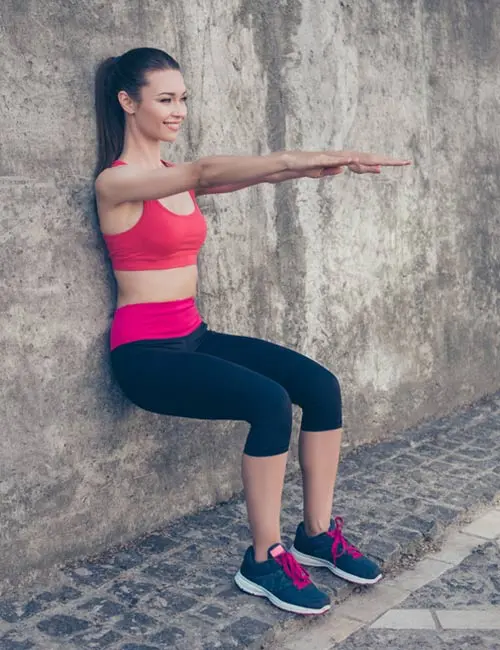
Target – Quadriceps, hamstrings, glutes, and calves.
How To Do
- Stand with your back against a wall, feet shoulder-width apart, shoulders rolled back, and chest up. Look ahead.
- Keeping your back against the wall, slide your body down and come to a sitting position. Reposition your legs by taking a step ahead for balance and support.
- Keep your hands extended in front of you. You may also place them against the wall for support.
- Hold this pose for 10 seconds and relax.
Sets And Reps
3 sets of 10 seconds before you hold. Increase the duration of the hold as you progress and become more comfortable with this exercise.
6. Assisted Calf Raises
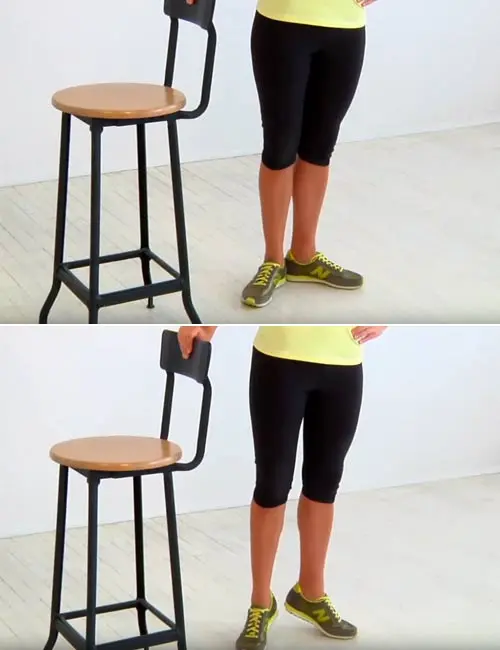
Target – Calves and hamstrings.
How To Do
- Stand behind a chair and hold the back support with both hands.
- Raise both the heels and hold the pose for a second.
- Lower your heels gently back to the ground.
Sets And Reps
3 sets of 12 reps. Do this 4-5 times a day.
7. Assisted Stair Climbing
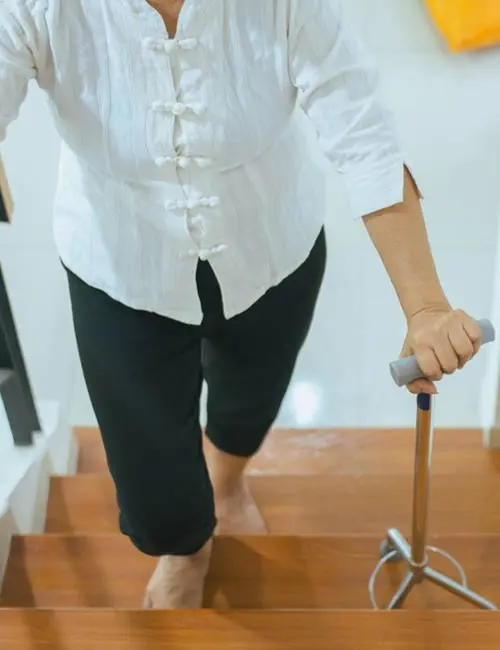
Target – Knee extensors, hamstrings, quads, and calves.
How To Do
- Hold the top of the baluster of the staircase. You may also take the support of a tripod walking stick. Remember this mantra – up with the good, down with bad.
- Lift your good leg and place it on the higher platform. Balance your body on your good leg, walking stick, and baluster, and lift your affected leg. Place it beside your good leg.
- While coming down, go down with your affected leg first. Then, place your good leg beside the affected leg.
Sets And Reps
1 set of 10 climb-ups and 10 climb-downs. Increase the sets as you become more comfortable with the stair exercise.
8. Stationary Biking
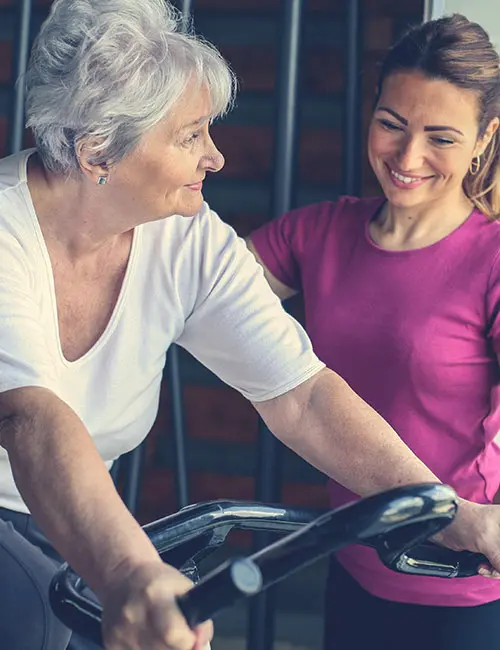
Target – Quadriceps, hamstrings, knee extensors, glutes, and calves.
How To Do
- Sit comfortably on a stationary bike saddle.
- Place a foot on each pedal. Start pedaling. Be slow and gentle.
- You may also do the cycling exercise in a swimming pool with warm water.
Sets And Reps
3 sets of 30 – 50 reps
In addition to these exercises, you can try standing leg lifts, resistance bad left lifts, seated leg lifts, or the seated row machine to strengthen your leg muscles.
Aqua Cardio Exercises For Knees
9. Walking In The Swimming Pool
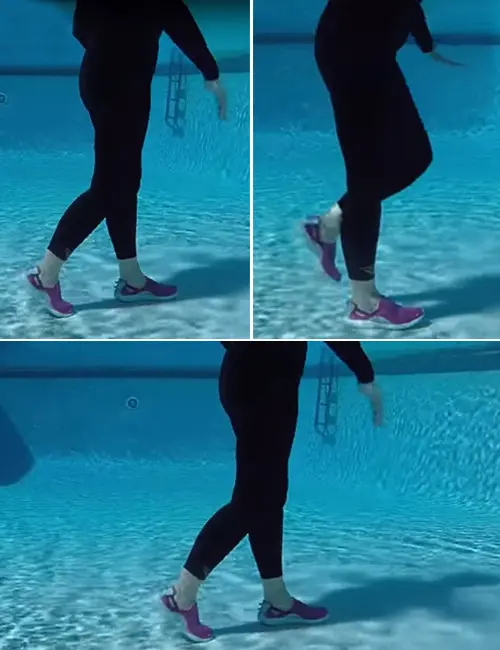
Target – Quads, glutes, hamstrings, calves, and knee extensors.
Pool Condition – Warm water pool
How To Do
- Stand close to the pool wall. Remember – up with your good leg, and down with your arthritic leg.
- Bend your knee, lift your leg, and place it in front of you.
- Bend the other knee, lift your leg, and place it in front of you.
- Walk 15 steps forward.
- Walk back to your original position.
Sets And Reps
Do 2-3 sets of 15 reps of forwarding and back steps each. Practice this once per day under the supervision of your physical therapist.
10. Side Walking In Swimming Pool
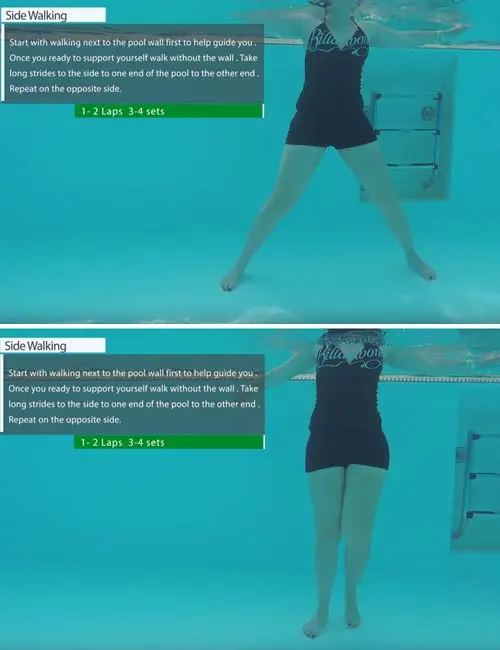
Target – Knee extensors and all the tendons and ligaments in the knees.
How To Do
- This is very similar to walking in the swimming pool. Stand in the waist or chest-deep swimming pool (that has warm water).
- Lift your leg off the floor, bend your knee, and place it to the side. Maintain a distance wider than shoulder-width.
- Simultaneously, pick your other foot off the floor, bend your knee, and place your foot right beside the other foot.
- Go back and forth the length of the swimming pool to complete one lap.
Sets And Reps
2 sets of 1 lap. You may decrease or increase the distance covered or sets, respectively, according to your comfort level.
11. Underwater Treadmill
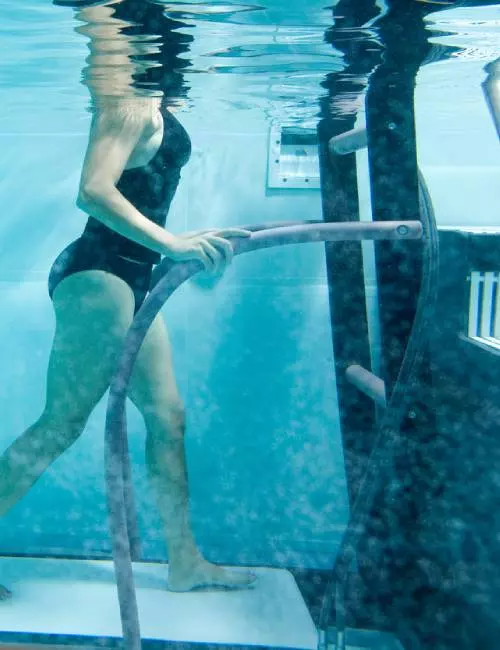
Target – Quads, hamstrings, glutes, and calves.
How To Do
- You may find an underwater treadmill at the local physical therapy gym. Step on the treadmill and hold the side handles.
- Start walking at a slow pace.
- You may also run when you are comfortable enough. Do check with your doctor beforehand.
Sets And Reps
10 minutes.
12. Aqua One-Leg Jogging
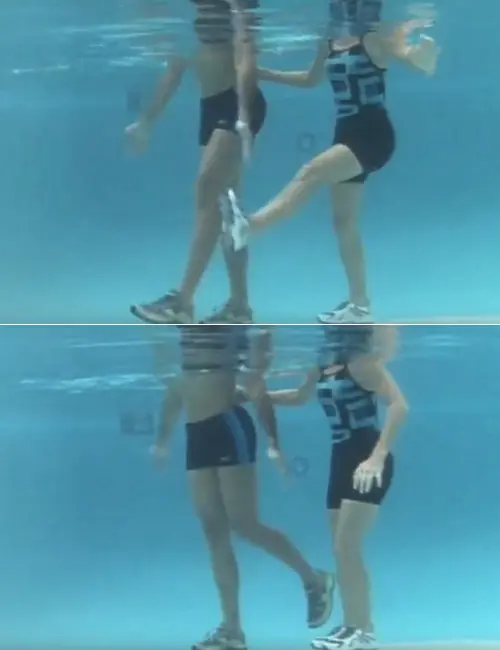
Targets- Quadriceps, Hamstrings.
How To Do
- You may use a pool noodle under your arm to give you a balance and relax your shoulders.
- Rest your arms, shoulders, and forearms on the noodle while keeping your entire body straight underwater.
- Bend your knees at 90 degrees and extend the legs down as deep as you can.
- Pull your leg back, pointing the toes downward.
- Try to jog forward like this way, without staying in one place.
- Repeat the same with the other leg as well.
 Did You Know?
Did You Know?Sets And Reps
5 minutes
13. Aqua Squats
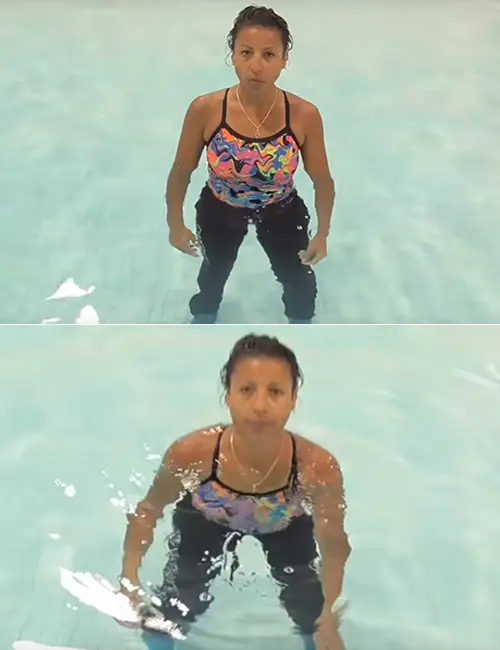
Targets – Quadriceps
How To Do
- Stand straight with your feet shoulder-width apart. Keep your hands straight beside your body.
- Bend both knees until your shoulders are underwater and arms are at the water level.
- Straighten your knees and bring the arms down by your side again, coming back to the starting position.
- Keep your back straight all the time.
Sets And Reps
2 minutes
14. Step Up In The Swimming Pool
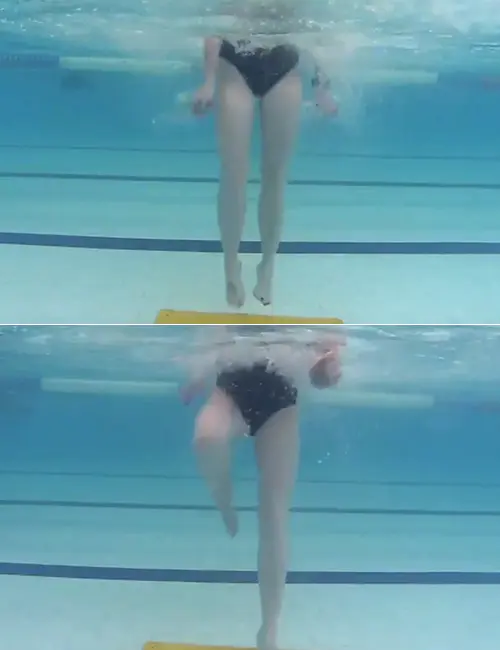
Target – Quads, glutes, hamstrings, and calves.
How To Do
- Place a sinkable box at the bottom of the swimming pool, near the wall, so that you get some support from the wall.
- Stand behind the box and place one hand on the wall to balance your body.
- Step on the box with your good leg first and follow with your arthritic leg.
- Step down in front of the box with your arthritic leg first and follow with your good leg.
- Take a back step on the box with your good leg first and follow with your arthritic leg.
- Step down behind the box with your arthritic leg first and follow with your good leg.
Sets And Reps
Initially, do 2 sets of 10 step ups and step downs. Take a break of 30 seconds (or more) between the two sets. Move on to doing more number of steps and reps as you progress. Do this once a day. You can also try different step-ups with modifications under the supervision of your physical therapist to spice up your workout routine.
15. Side Leg Raises In The Swimming Pool
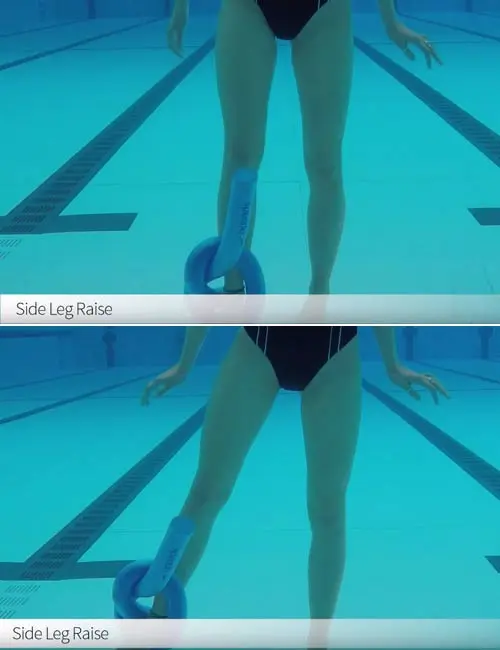
Target – Abductors and glutes.
How To Do
- Stand in waist-deep warm water. Use a water noodle to add some weight to the affected leg. You may also use ankle weights.
- Hold the side of the pool for support and balance.
- Lift your affected leg sideways. Lift it as high as possible.
- Slowly lower the leg.
- Pause and lift it sideways again.
Sets And Reps
3 sets of 10 reps.
These simple knee-friendly exercises can help strengthen your legs. If done right, they may also relieve your knee pain. In addition to these cardio exercises, you can try isometric exercises, Nordic walking, stretches including hip stretches, calf stretches, hamstring stretches, knee-to-chest stretches, and quadricep stretches to strengthen your leg muscles.
Practicing these regularly is a great way to reduce knee pains and prevent further complications, especially in older people, as it is a common issue among them. According to a cross-sectional study conducted on 4292 participants aged between 60–69 years, 1758 (40.9%) reported knee pain, and 570 (13.3%) reported self-reported knee osteoarthritis. As per the data, the prevalence of knee OA is between 6.4% and 7.4% in ages between 60 and 69.
Even if these workouts are helpful, paying attention to your body is important. If any exercise causes discomfort or sharp pain, stop and consult with a healthcare professional. Remember that every person’s health is different, and modifications may be required to ensure safe and efficient exercise.
However, it is important you take the necessary precautions.
Precautions
- Do not go past the safe range of motion.
- Do not sit by folding your good leg over the affected leg.
- Avoid hyperextension of the knee.
- Do not perform high-intensity exercises.
- Avoid running, jogging, and dancing on solid ground.
- Avoid using additional medications to mask the pain.
The following tips can help promote faster healing. Do run these by your healthcare provider and trainer.
Tips To Follow
- Follow a balanced diet.
- Take your time and be gentle while doing the exercises.
- Always warm-up before exercising.
- Ice your knee when you feel it’s appropriate.
- In case of increased pain, talk to your doctor and rest your knee.
Add resistance training to your program to build stronger knee muscles and improve their stability. Leg lifts and sitting resistance band exercises are two examples of workouts that may be particularly beneficial.
Infographic: Tips To Keep Your Knees Healthy
While the above cardio exercises can improve the strength and range of motion of weak knees, it is important to take a few steps to preserve your joint and knee health. Click on the infographic below to learn about the dos and don’ts to keep your knees functioning well. Illustration: StyleCraze Design Team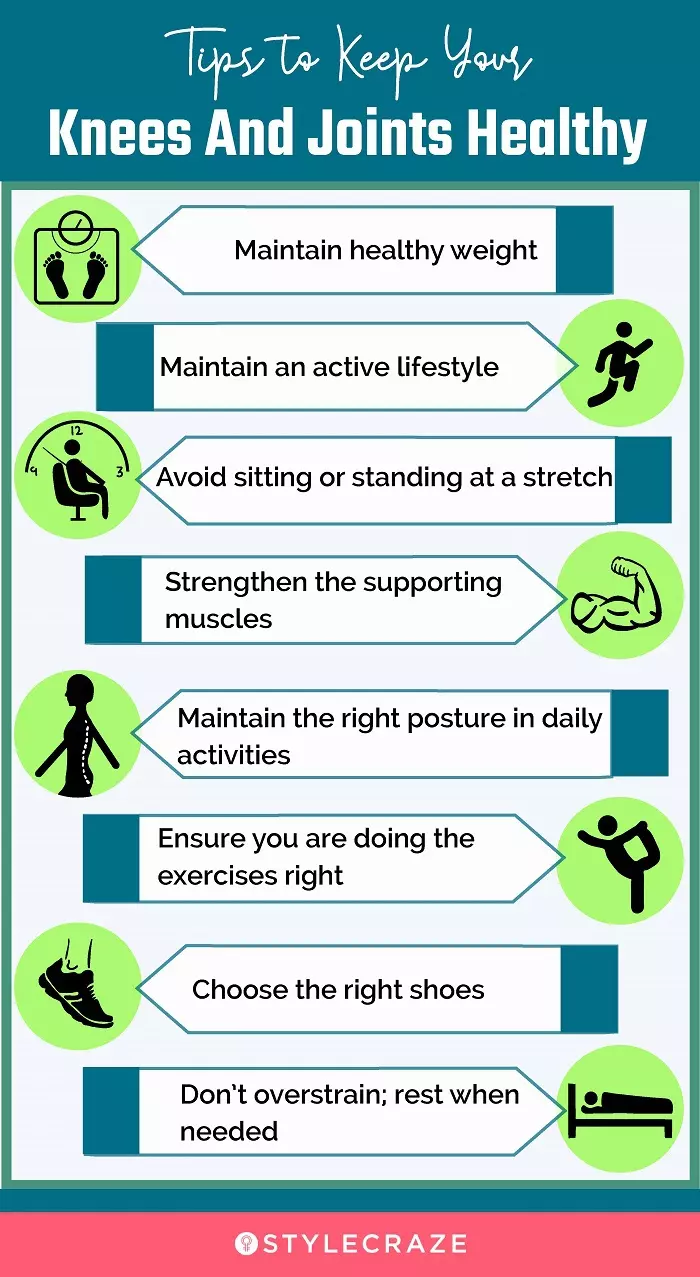
Knee pain can certainly make life difficult for you. Instead of trying to endure the pain and live with it, it is best to do some low-intensity cardio for bad knees. The knee-strengthening exercises discussed in this article improve your condition greatly by working on the quads, knee extensors, quadriceps, hamstrings, glutes, calves, and ligaments and tendons in the knee. Make sure you warm up your body well before doing these exercises to avoid injury. Also, follow a balanced diet and avoid high-intensity exercises and hyperextension of the knees. Most importantly, consult your doctor before doing these exercises.
Frequently Asked Questions
What types of cardio are best for bad knees?
Low-impact cardio exercises like swimming, cycling, elliptical training, walking, and rowing are perfect for bad knees because they reduce joint strain and increase fitness. These exercises effectively improve cardiovascular health without increasing the risk of injury or knee pain.
How often should I perform these cardio exercises?
For optimal effects, try to do low-impact cardio exercises three to five times a week for 30 to 45 minutes each time. Adjust the frequency and length to your knee comfort and fitness level, increasing it gradually as your strength and endurance improve.
Are there any specific warm-ups recommended before starting these exercises?
Warm up with low-impact cardio activities like leg swings, knee circles, and marching in place to enhance blood flow and joint mobility before beginning. Stretching the quadriceps and curling the hamstrings can also help warm up the muscles and lower the chance of knee discomfort.
Can you do squats if you have painful knees?
Regular squats are not recommended with painful knees. However, you may try aqua squats as they exert low pressure on your knees. Ensure you speak to your doctor before you start the exercise regimen.
How can I increase cartilage in my knees?
Cartilage in knees can be increased by including healthy and protein-rich foods in your diet. Take the right supplements after discussing with your doctor, practice regular exercise, and aim to lose weight.
Is swimming good for the knees?
Yes, swimming is a low-impact activity that strengthens the muscles around your knees, which may help strengthen the knees and reduce pain (10). In addition, the buoyancy of the water supports the body weight during swimming, putting less strain on joints and easing knee pain.
Is elliptical good for knees?
Yes, elliptical workouts are low-impact, easy on the knees, and wonderful for the elderly and those recovering after a knee injury, osteoporosis, ankle damage, and knee arthritis (11).
Illustration: Cardio Exercises For Bad Knees That Strengthen Leg Muscles

Image: Stable Diffusion/StyleCraze Design Team
Learn the best exercises for bad knees to help reduce pain and improve mobility. Watch this video for tips on how to stay active and healthy!
References
Articles on StyleCraze are backed by verified information from peer-reviewed and academic research papers, reputed organizations, research institutions, and medical associations to ensure accuracy and relevance. Read our editorial policy to learn more.
- The effect of low-load exercise on joint pain, function, and activities of daily living in patients with knee osteoarthritis, Knee, US National Library of Medicine, National Institutes of Health.
https://pubmed.ncbi.nlm.nih.gov/29325839/ - Knee Osteoarthritis, US National Library of Medicine, National Institutes of Health.
https://www.ncbi.nlm.nih.gov/books/NBK507884/ - Incidence and risk factors of exercise-related knee disorders in young adult men, BMC Musculoskeletal Disorders, US National Library of Medicine, National Institutes of Health.
https://www.ncbi.nlm.nih.gov/pmc/articles/PMC5545830/ - Knee Pain and a Prior Injury Are Associated With Increased Risk of a New Knee Injury: Data from the Osteoarthritis Initiative, The Journal of Rheumatology, US National Library of Medicine, National Institutes of Health.
https://www.ncbi.nlm.nih.gov/pmc/articles/PMC4522334/ - Relationship between frequent knee pain, obesity, and gait speed in older adults: data from the Osteoarthritis Initiative, Clinical Interventions in Ageing, US National Library of Medicine, National Institutes of Health.
https://www.ncbi.nlm.nih.gov/pmc/articles/PMC4772994/ - Managing osteoarthritis, Australian Prescriber, US National Library of Medicine, National Institutes of Health.
https://www.ncbi.nlm.nih.gov/pmc/articles/PMC4653978/ - Home based exercise programme for knee pain and knee osteoarthritis: randomised controlled trial, The BMJ, US National Library of Medicine, National Institutes of Health.
https://www.ncbi.nlm.nih.gov/pmc/articles/PMC128377/ - Warm-Up Strategies for Sport and Exercise: Mechanisms and Applications, Sports Medicine, US National Library of Medicine, National Institutes of Health.
https://pubmed.ncbi.nlm.nih.gov/26400696/ - Effect of Pilates based exercises on symptomatic knee osteoarthritis: A Randomized Controlled Trial
https://pubmed.ncbi.nlm.nih.gov/35099429/ - Evidence that Swimming May be Protective of Knee Osteoarthritis: Data from the Osteoarthritis Initiative, US National Library of Medicine, National Institutes of Health.
https://www.ncbi.nlm.nih.gov/pmc/articles/PMC7166141/ - Referent body weight values in over ground walking, over ground jogging, treadmill jogging, and elliptical exercise, Gait & Posture, ScienceDirect
https://www.sciencedirect.com/science/article/abs/pii/S0966636213005997
Read full bio of Dr. Sudhansu Singh
Read full bio of Ravi Teja Tadimalla
Read full bio of Sindhu Koganti







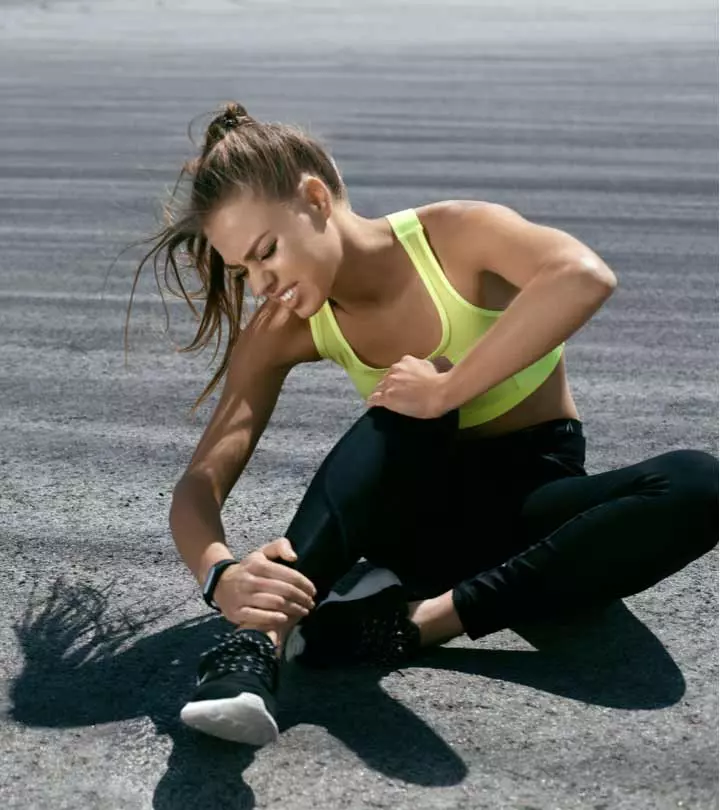
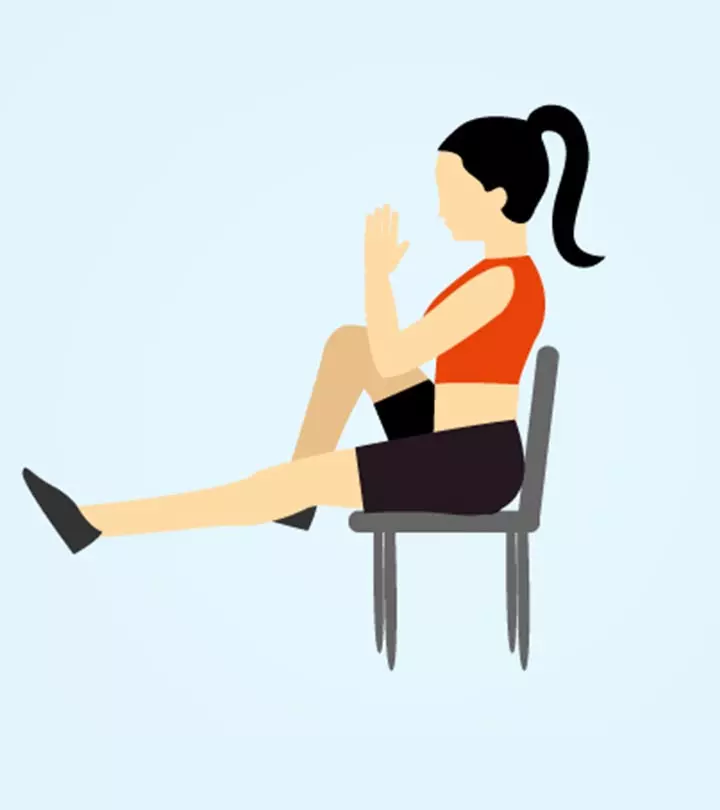
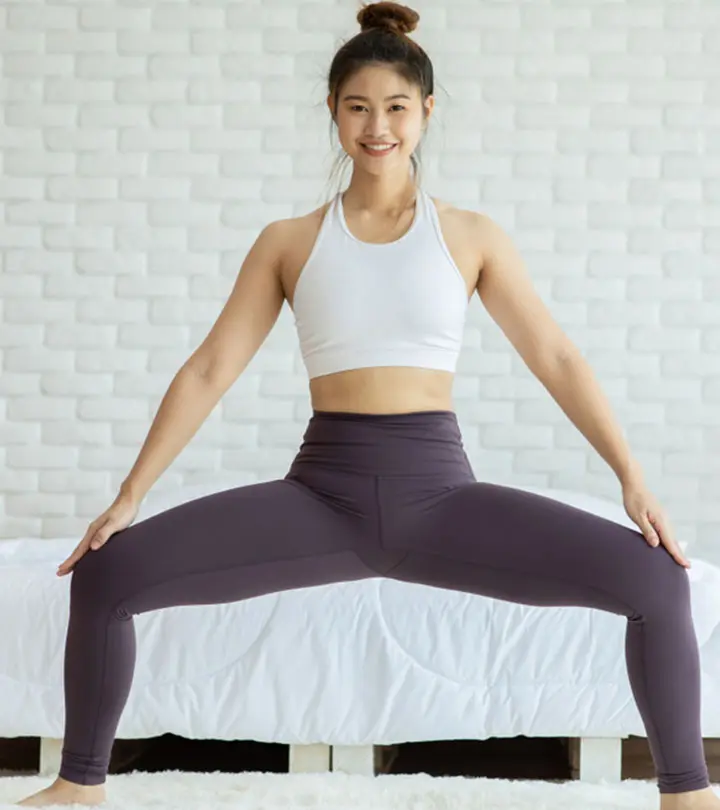

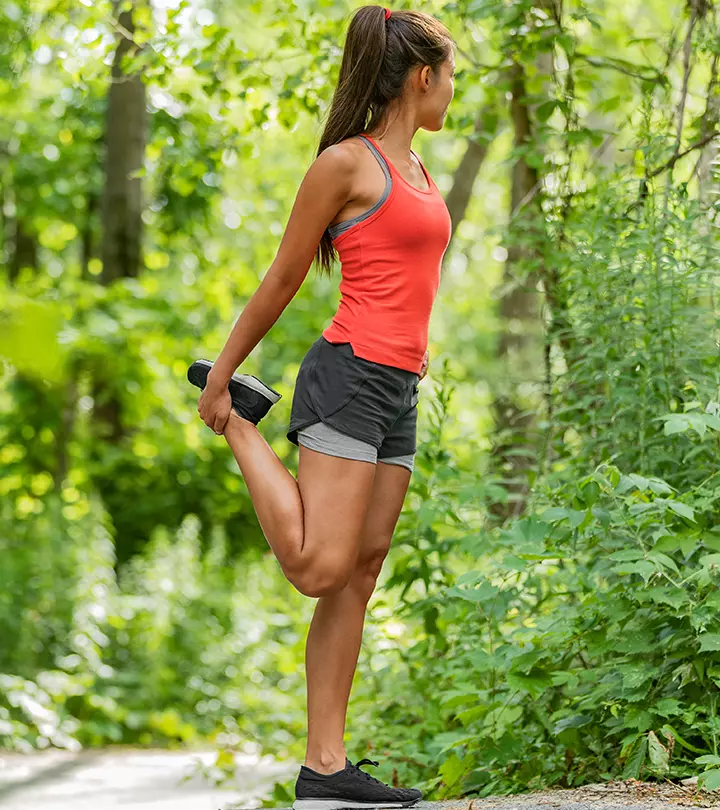
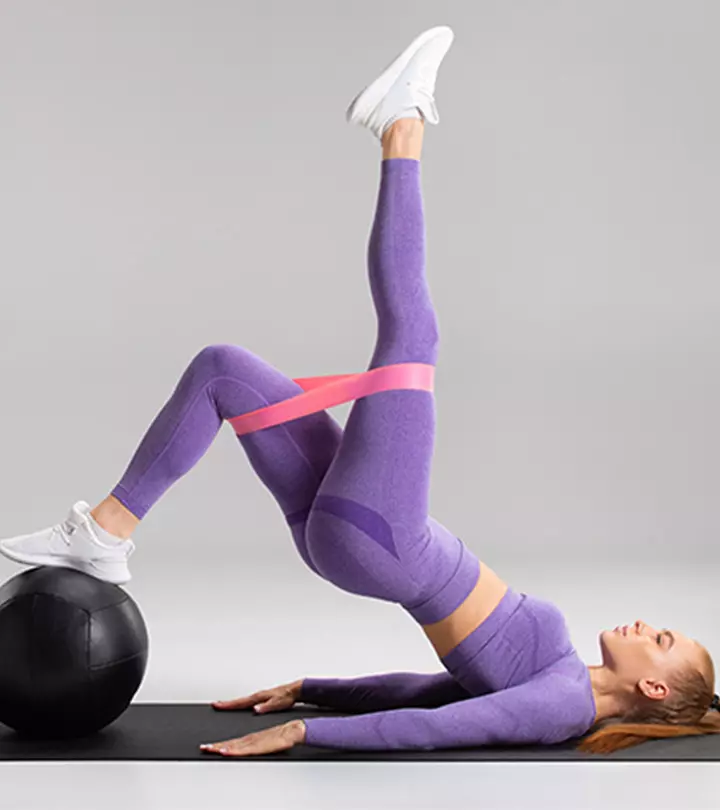
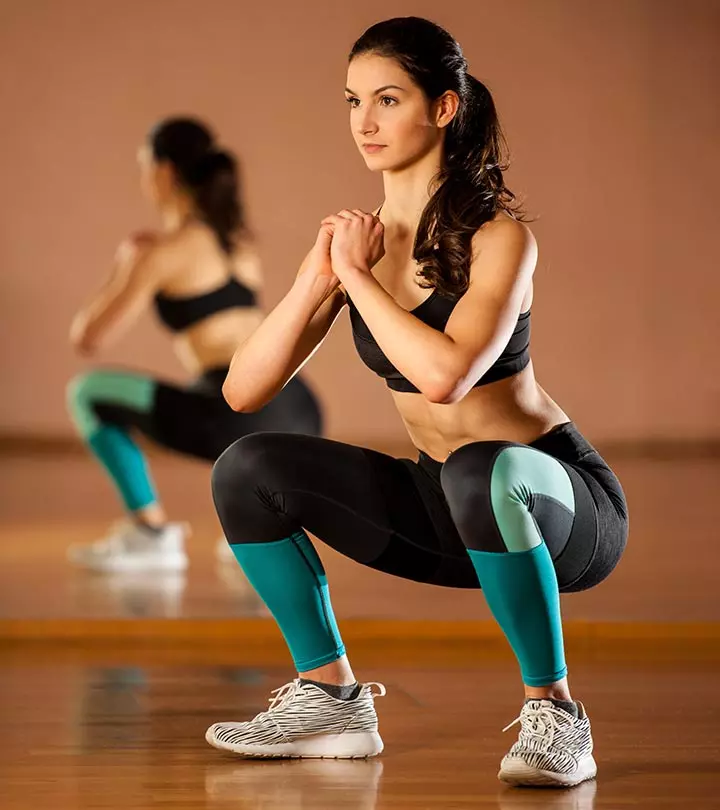
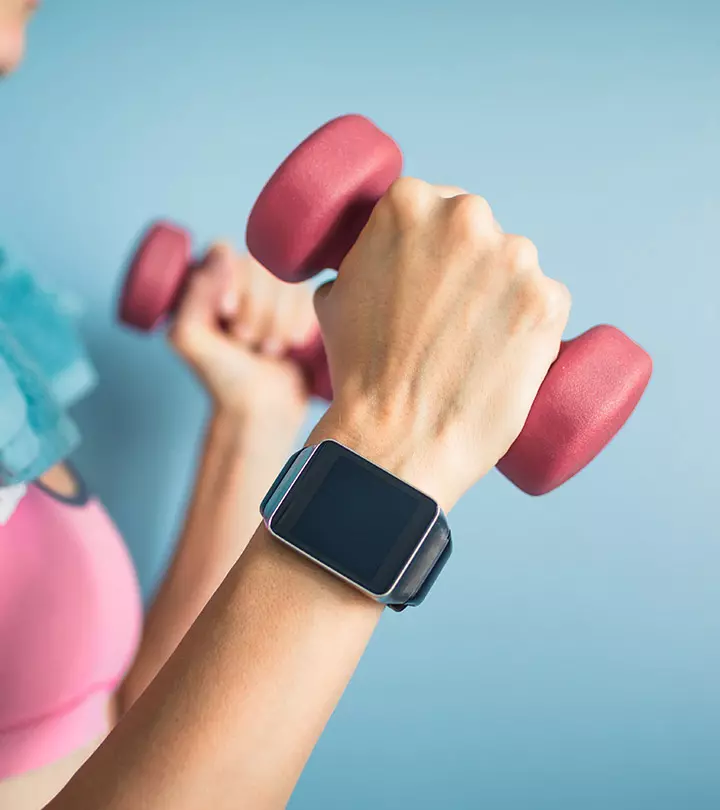

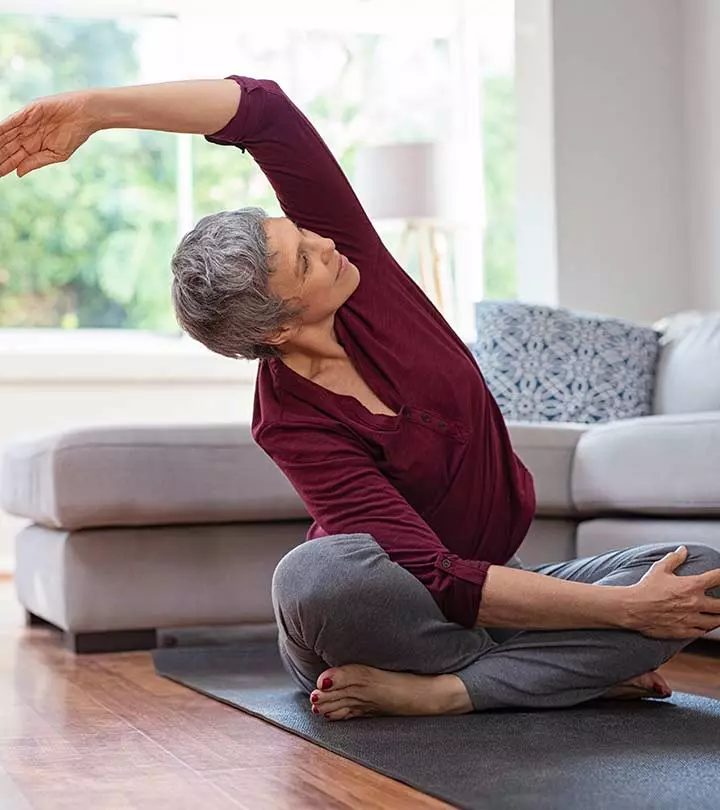
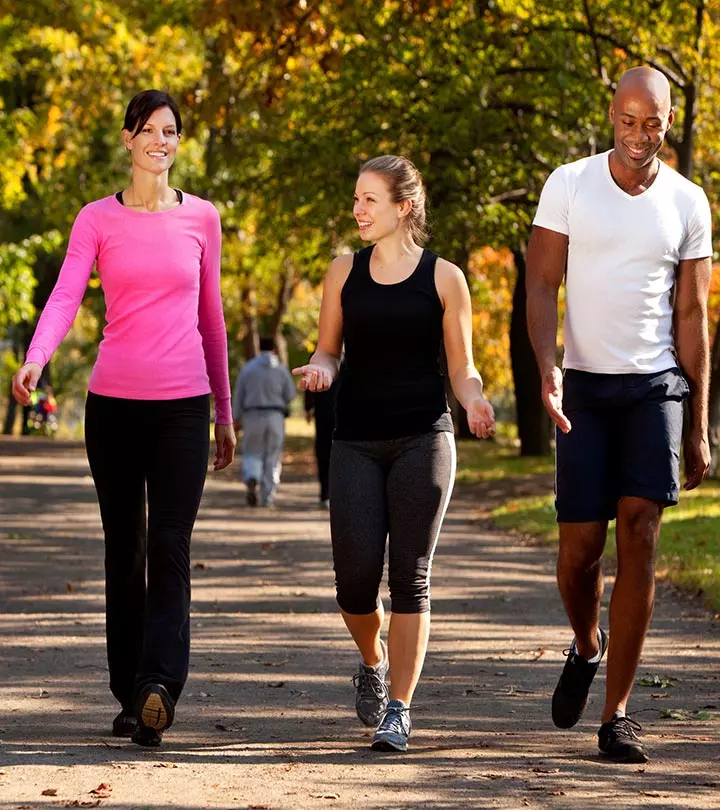
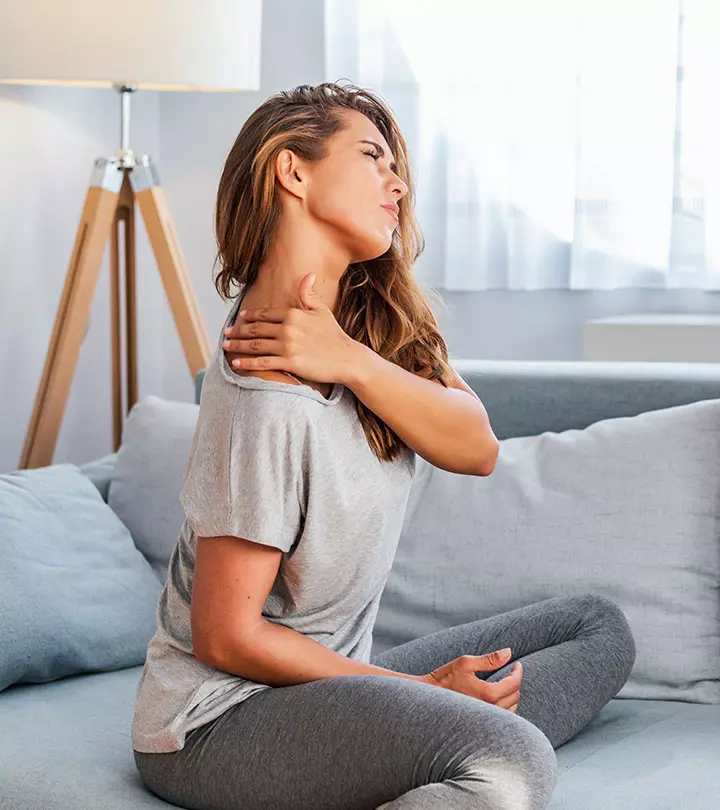
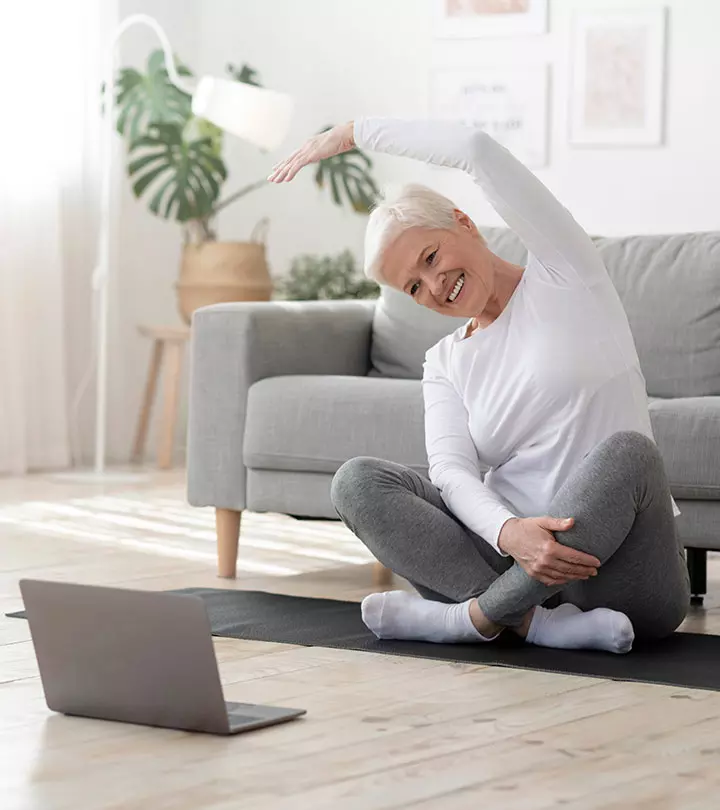
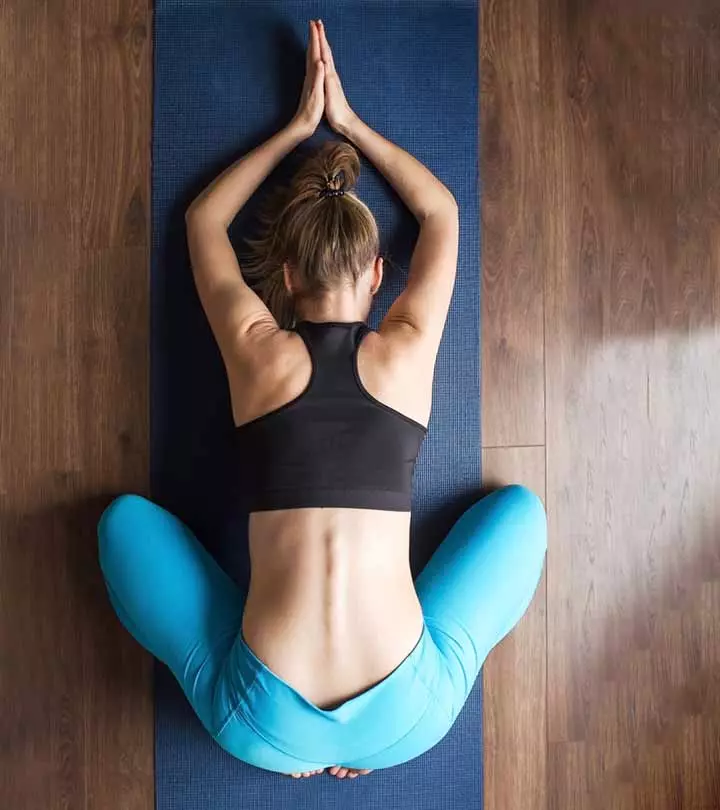
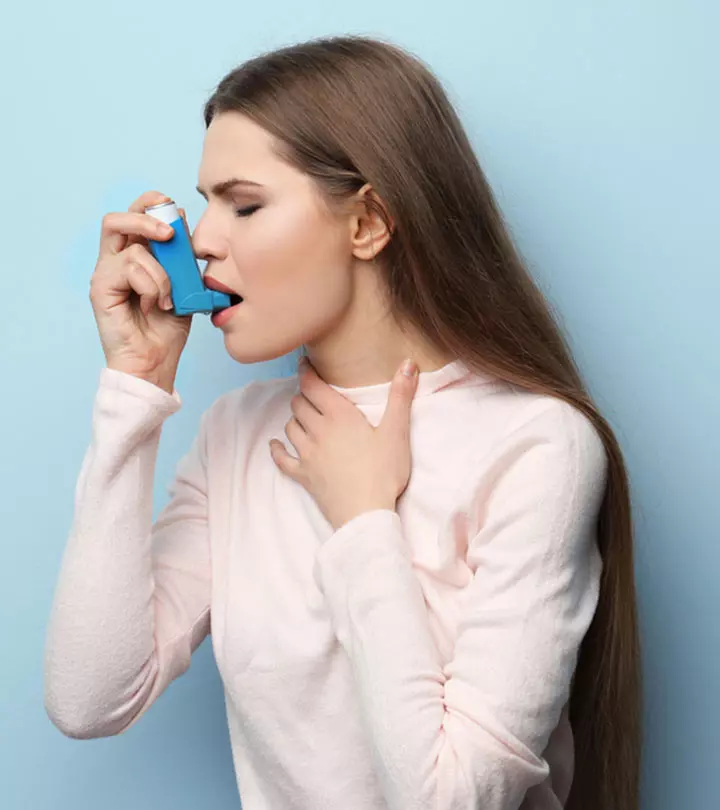
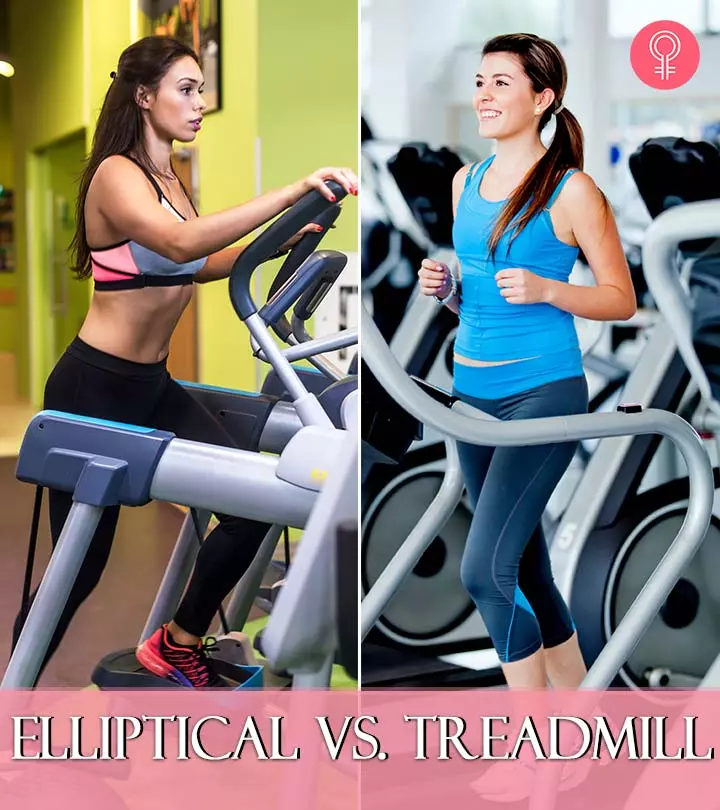
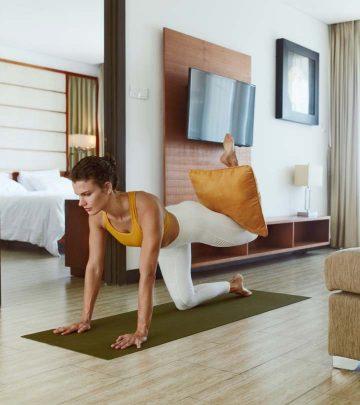
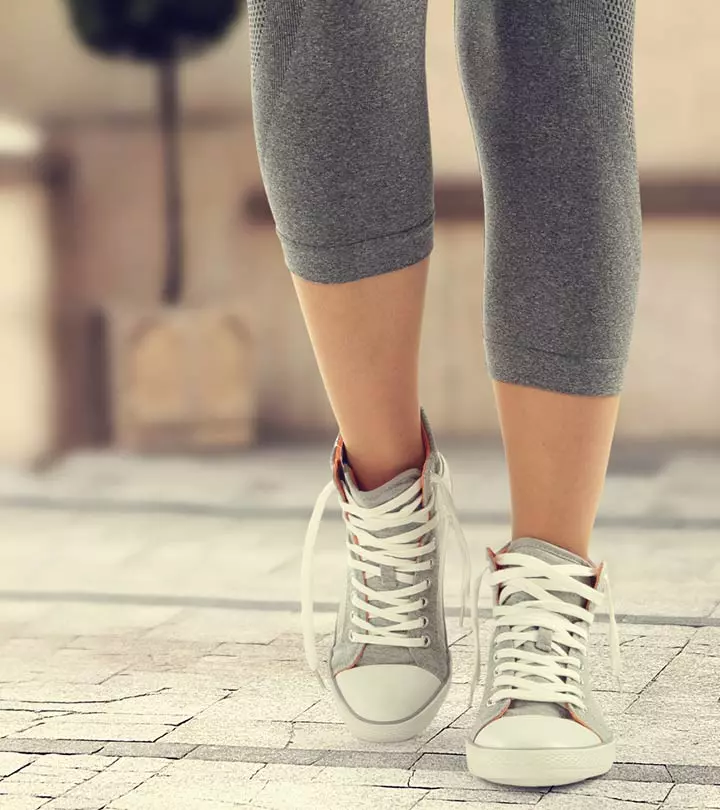
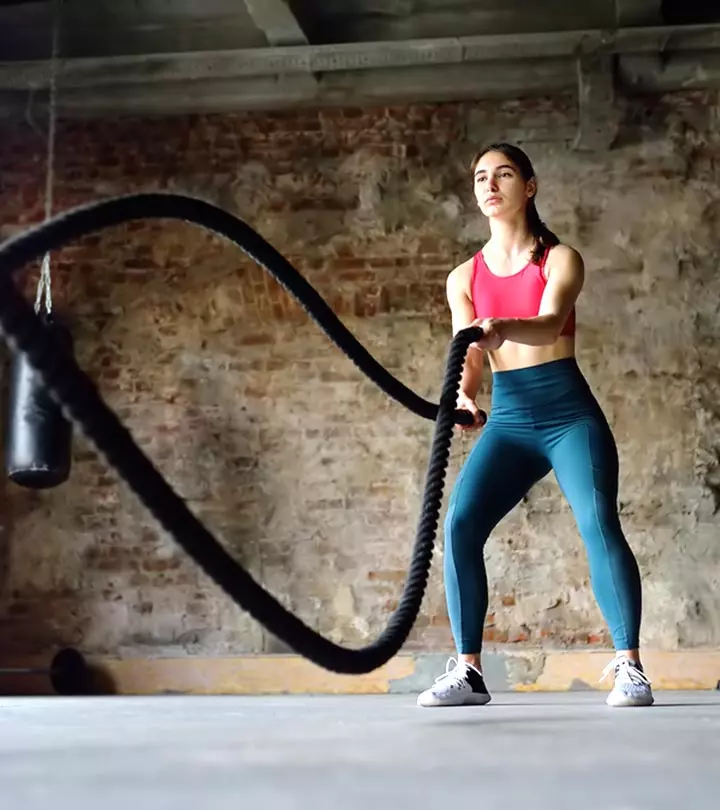


Community Experiences
Join the conversation and become a part of our empowering community! Share your stories, experiences, and insights to connect with other beauty, lifestyle, and health enthusiasts.